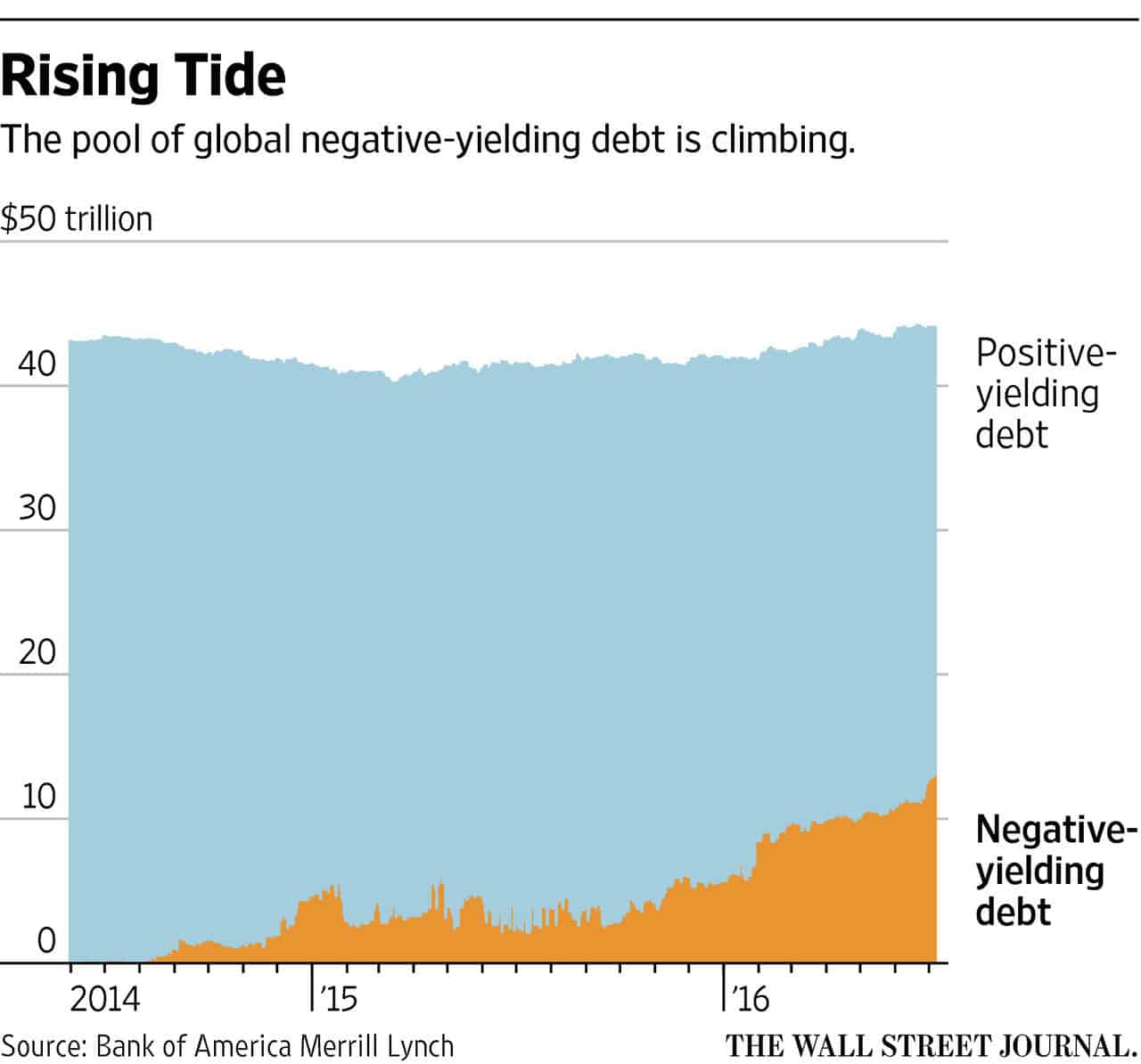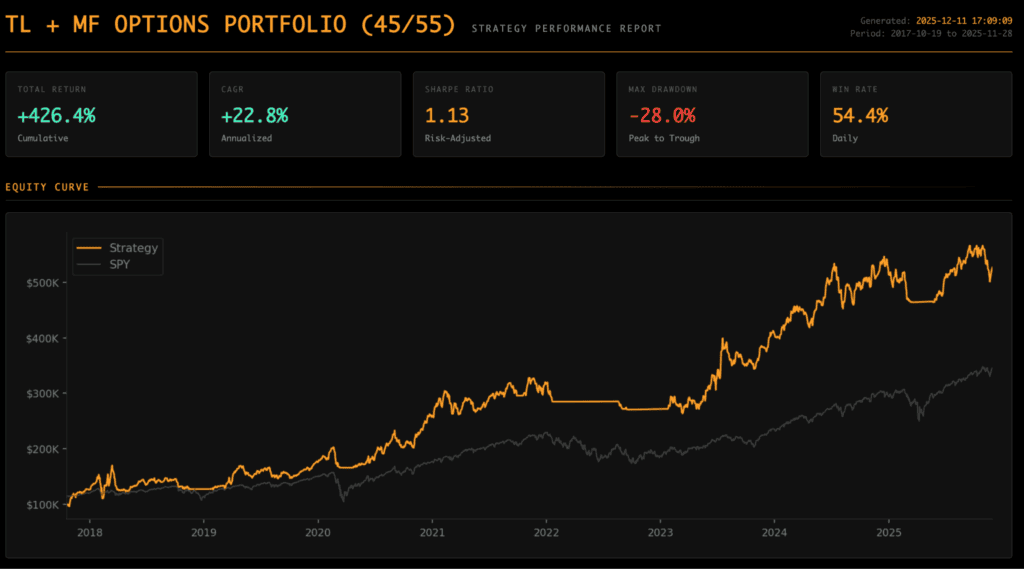Rarely do we investors get a market that we know is overvalued and that approaches such clearly defined limits as the bond market now. That is because there is a limit as to how negative bond yields can go. Their expected returns relative to their risks are especially bad. If interest rates rise just a little bit more than is discounted in the curve it will have a big negative effect on bonds and all asset prices, as they are all very sensitive to the discount rate used to calculate the present value of their future cash flows. That is because with interest rates having declined, the effective durations of all assets have lengthened, so they are more price-sensitive. For example, it would only take a 100 basis point rise in Treasury bond yields to trigger the worst price decline in bonds since the 1981 bond market crash. And since those interest are embedded in the pricing of all investment assets, that would send them all much lower.
Those words are from the most successful hedge fund manager of all time — Ray Dalio.
When Ray speaks, you should listen. He’s been pulling money consistently from the markets over the last 30 years and has a long record of being right.
There is now more than $13 trillion — that’s trillion with a “T” — of global debt that offers investors a guaranteed loss if held to maturity.
The philosopher Nietzsche would remark (with some slight adjustments by me) “In individuals, insanity is rare; but in groups, markets, and economies, it is the rule.”
Insanity has to be an element in why “investors” would line up for a chance to pay to lend to a government. Should those who partake in this madness still even be referred to as investors? Is that not somewhat of an oxymoron now? Perhaps they should be called “burners” for all the capital they’re destroying?
Anyway, these burners are partaking in what can only be described as the largest game of “Greater Fools” in the economic history of man.
For those of you not familiar with greater fools theory (GTF), you need to be, because it seems to be the logic (or illogic?) at the foundation of our current bizarro capitalistic world.
Wikipedia defines greater fool theory as when “the price of an object is determined not by its intrinsic value, but rather by irrational beliefs and expectations of market participants. A price can be justified by a rational buyer under the belief that another party is willing to pay an even higher price.”
At Macro Ops, we define GTF as “insanely stupid and endlessly repeated moments in market history when a bunch of idiots start setting their cash on fire because they see other people doing it.”
Or there’s how 19th century editor of The Economist, Walter Bagehot, described it when writing about the 18th century South Sea Bubble. GFT is when “a great deal of stupid people have a great deal of stupid money… At intervals, the money of these people — the blind capital, as we call it, of a country, is particularly large and craving; it seeks for someone to devour it, and there is a ‘plethora’; it finds someone, and there is speculation; it is devoured, and there is ‘panic’.”
With over $13 trillion dollars (which is over half of all Western debt) held by bond owners that are assured to get a lower amount in return than their principal, I suppose we can all agree this is prima facie an example of GTF on a Godzilla scale. Here’s the following via the WSJ (bolding is mine):
The pull to par has become a drag: a buy-and-hold investor is guaranteed to lose money, even before taking inflation into account. The only way to make money is to find another buyer willing to pay a higher price—but that implies a bigger loss down the road.
The crucial thing to understand is that these instruments are no longer bonds—at least not in the traditional sense. With no income attached to them, they are simply bets on the price another investor is willing to pay. They will also be more volatile: the long wait for repayment means small changes in yield will have a big effect on current prices.
And so here we sit… at a peculiar moment in history where the most boring of boring and safest of safest assets, the plain old government bond, that sits at the top of our global financial system and is the foundation on which all other assets are valued, has now been bid well into “stupid” territory and more resembles a Dot Com stock or shares of the South Sea Company than itself.
Well… what does this mean? Where do we go from here?
Good question, so I’ll give you a good answer.
Dalio said at the top of this passage that “there is a limit as to how negative bond yields can go.” Those limits have been reached, so naturally that now leaves us with only one direction for rates to go… UP.
To see how we get to a higher rate environment when we’re in such a slow growth world, we have to turn to the avant garde of central banking — the Bank of Japan (BOJ).
Japan and its central bank made an interesting change to their monetary policy, which its significance has seemingly gone unnoticed by the mainstream investment community. I’m talking about zero rate targeting for 10-year Japanese government bonds.
Japanese 10-years were trading at below negative rates. So by targeting the zero bound, the BOJ is tightening policy. Why would a country that is fighting a losing battle against deflation want to raise longer term interest rates? The answer to this question is where the significance of this move lies.
By adopting a long-term interest rate target, the BOJ is handing over control of its balance sheet to the market. This is because no institution, not even a central bank, can set both the quantity and price of an asset. So by setting the price of 10-year Japanese government bonds at zero percent, the bank is effectively saying it will contract or (more likely) expand its balance sheet to whatever size necessary to keep prices there.
That in itself is pretty extraordinary, but the reason why the BOJ is doing this may be even more so.
Saddled with over 500% in total debt-to-gdp, Japan has backed itself into a corner in which there’s only one way out: inflation… and lots of it. It’s coming to grips with this although it has been slow to reach acceptance. But this looks like it’s finally changing.
The BOJ, by agreeing to backstop JGBs, and accepting an inflation target higher than 2%, is essentially paving the way for outright monetary financing. We’ve talked in the past about how Japan will likely eventually issue a perpetual zero coupon bond. This would allow the government to spend freely while also devaluing the yen (by a lot), thus monetizing the country’s debt. Well, this is the first step in that direction.
By keeping the long-term rate pegged at zero, the BOJ is allowing the Abe government to conduct large scale fiscal stimulus by issuing unlimited bonds while taking away the risk of triggering a death-spiral in JGBs that would lead to higher interest rates — since the BOJ will just print yen and buy whatever 10-years the market sells.
This printing will cause Japan to finally get its inflation and probably a lot more than it would like.
The yen may look a lot like Zimbabwean dollars in a few years time.
You see, bonds and currencies are inextricably linked. Bonds are just durational assets of a currency. When a currency is debased (meaning it loses its value), the bonds that are held in that currency also lost value. So when governments debase their currency, they’re intentionally devaluing the cost of their debt. This is why bonds sell off in inflationary regimes, because that inflation is directly eroding both the coupon and principal on those bonds. This results in investors fleeing from fixed income assets and into things that offer better protection from inflation.
And this fleeing from JGBs causes a rapid feedback loop.
● Investors see the yen depreciating —>
● They sell JGBs in response —>
● BOJ prints more yen to buy up those JGBs to sustain the zero target —>
● Yen depreciates further because of it —>
● Depreciation once again causes more investors to sell which starts the loop all over again
It’s easy to see how this will get out of control quickly. There’s no chance the BOJ can manage a controlled devaluation with this method. Once the feedback loop kicks off, we can expect the value of the yen to be destroyed.
It’s important to pay close attention to all of the stupid monetary experiments the BOJ is doing because they are at the fore; where they go, the ECB and Fed will closely follow. And the reason for this is simply because Japan is furthest along in its long-term debt cycle, followed closely by Europe, the US and finally, China.
The coming attempt at a complete takeover of the global capital system by central banks should come as no surprise to any of us. Our noble, infallible and wise monetary leaders have been openly talking about the necessity for more “unorthodox” monetary tools (ie, direct stock purchases, helicopter drops and straight debt monetization).
Intentional currency debasement, like what will occur with this zero rate target, used to be something of a taboo in the elite policy circles, but now it’s become a race amongst academic types to devise a more effective and “opaque” way of doing just that.
Apparently the consensus among those who govern and control our monetary system is that the only way to wealth and prosperity for all is through the complete incineration of every viable store of wealth.
Makes so much sense when you “really” think about it… but don’t think about it… just shut up, drink the kool-aid and be thankful for the extreme competence of those running our system.
Enough sarcasm… here’s why this matters and how this plays out.
Sovereign bonds sit at the base of the capital structure. They’re considered risk-free and so they’re the basis for what all other assets (ie, corporate bonds, high yield, equities etc.) are valued off of.
The financial system works off risk premia spreads, which is the difference in expected risk/return between different assets. We’re not going to talk much more about that here, but if you’re interested, you can read this piece we wrote on the subject. It’s just important to know that when the return on sovereign bonds falls, the risk-premia spread is widened, and riskier assets become more attractive. And the opposite occurs when the return on bonds goes up; the spread contracts and riskier assets become less attractive.
Well when interest rates across the entire western world have hit their lower bound and have only one way they can go, you can see how this becomes an issue for other assets like stocks.
To turn to Dalio again, “that is because with interest rates having declined, the effective durations of all assets have lengthened, so they are more price-sensitive. For example, it would only take a 100 basis point rise Treasury bond yields to trigger the worst price decline in bonds since the 1981 bond market crash. And since those interest rates are embedded in the pricing of all investment assets, that would send them all much lower.”
The vampire bankers over at Goldman Sachs came out with a report not too long ago that showed that holders of US treasuries (TLT) would lose over $1 trillion should the Fed raise rates by just one percent.
One trillion dollars…. $1,000,000,000,000…. That’s equivalent to 1/18th of our annual GDP that would be wiped off the face of this earth in the event the Fed raises interest rates by a measly 1%. That is more than the total realized loss during the Great Financial Crisis that nearly cratered Western civilization.
Oh and that’s just here in the US where we still enjoy nominally positive real rates, unlike our counterparts over in Europe and Japan, who are sitting well below zero. There, a 1% rise in rates would wreak financial destruction on a scale never before seen in human history… and I am in no way exaggerating here. That is an absolute fact.
Currency destruction (runaway inflation) is in our near future. Central banks will see to that. But because of the large secular and cyclical debt cycles at work, we’re going to see deflation threaten one more time before central banks get legislatures to pass over unlimited power to them. And then they’ll go to work, doing what they do best… screwing perfectly good things up.
If ole’ Bagehot was here, watching this mess, he’d probably just nod his head with no sense of amazement and just say “yep, I’ve seen this play before… dumb money looking to be devoured.”









